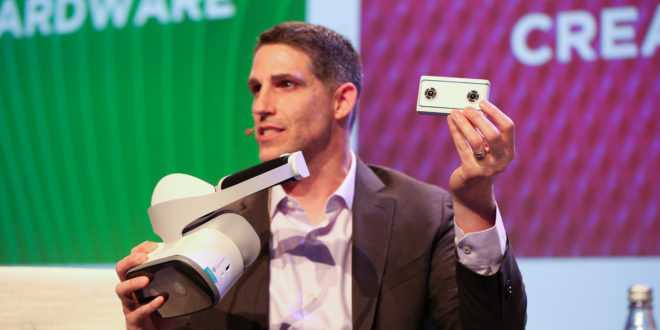There is nothing new about schools being quick off the mark when it comes to introducing new technology into the classroom. First came computers, then it was the interactive whiteboard, and more recently tablets have been introduced as a learning tool at all levels. And while interactive whiteboards and tablets have undoubtedly changed the set-up of the classroom, the way in which teachers actually go about teaching has largely remained the same since the mid ‘90s. That is where Rich Henderson, director of Global Education Solutions at Lenovo, believes VR can come into its own.
“Overall, in education there has been an explosion in technology uptake, and yet teaching hasn’t really changed much for the last 20 years,” he explains. “In truth, teaching hasn’t adapted at the same pace as the technology that teachers are using. However, with VR there is a great opportunity for change. We want to show how VR can disrupt the way teachers are currently teaching for the benefit of both teachers and students.”
He adds: “VR should be seen as a solution to supplement teaching, rather than an additional piece of hardware. For example, a biology teacher who is teaching their class about cells can use VR to actually show their students inside of cells. They can then relate what the students have seen using VR with the curriculum that they need to teach. It isn’t about replacing teaching, but instead VR is there to assist teachers by engaging students.”
With VR being marketed as one for the teachers as well as the students, it begs the question: ‘Do teachers even want it?’ Well, according to Lenovo’s own, research, teachers cannot wait to get VR into their classrooms. The study found that 94 per cent of teachers in the UK believe that VR ‘would benefit the classroom’, with 84 per cent believing that VR will be ‘crucial in creating the workforce of tomorrow’. On a more practical level, more than a third admitted that they struggled to make ‘things in the world real and relatable when their students have not experienced them previously’, with over half of teachers surveyed saying that ‘grades would go up by delivering new experiences such as climbing Everest through VR’.
It is through those experiences that Lenovo believes VR has the power to level the playing field by giving children opportunities they previously didn’t have access to. In fact, Henderson believes that it is likely to be pivotal to the success of VR in education. “Of course, there will always be some teachers who see VR as a gimmick and refuse to accept the benefits it can bring,” Henderson says. “Our job is to show teachers how they can use VR to enhance learning for their students. VR really provides the ability to give all students the chance to experience certain things that they cannot experience in their daily lives.”
He adds: “For children who don’t have the chance to go on holiday and see different places, VR can do that for them. For history classes, VR can even take student back in time and place them on the beaches of D-Day.”
As VR continues to build momentum across different platforms and within schools, it provides a wealth of opportunities for partnership throughout the ecosystem. Goldman Sachs estimates that roughly $700 million will be invested in AR/VR applications in education by 2025, so there looks like there will be plenty of money to be made.
Henderson confirmed that all Lenovo partners will have access to a range of products developed specifically for the edTech market. Later this year, the firm will be offering three separate ‘class kits’ aimed primarily at the secondary school market. Launching in April in the US Lenovo’s kits will start from $2,700. For that amount, a school would receive three headsets with access to over 100 apps from the Google Daydream store and training and tutorials on how to best implement VR into the curriculum. A further two packages will also be put on the market providing 10 and 24 headsets respectively. As Henderson explains the concept of VR in the classroom is for the teacher ‘to use alongside traditional learning techniques’. Therefore there is no need for each student to have their own headset (for the moment anyway). And Henderson doesn’t believe there will be need or demand for individual headsets for each child for at least another five to ten years.
Close to home, the UK looks like being a hot destination for VR and – more importantly – for those selling VR. “The UK is actually one of the leaders in terms of introducing technology into the classroom,” Henderson adds. “We believe that the UK and North America will continue to lead when it comes to implementing VR into the classroom.”
And in summary Henderson concludes: “VR will continue to grow in other areas such as the gaming market, however the education sector will be right at the forefront of developing this technology. In particular, VR in education will lead to a lot of new content being made and I believe that we will see a great deal of apps designed specially for the edTech market in 2018.”
 PCR Tech and IT retail, distribution and vendor news
PCR Tech and IT retail, distribution and vendor news




